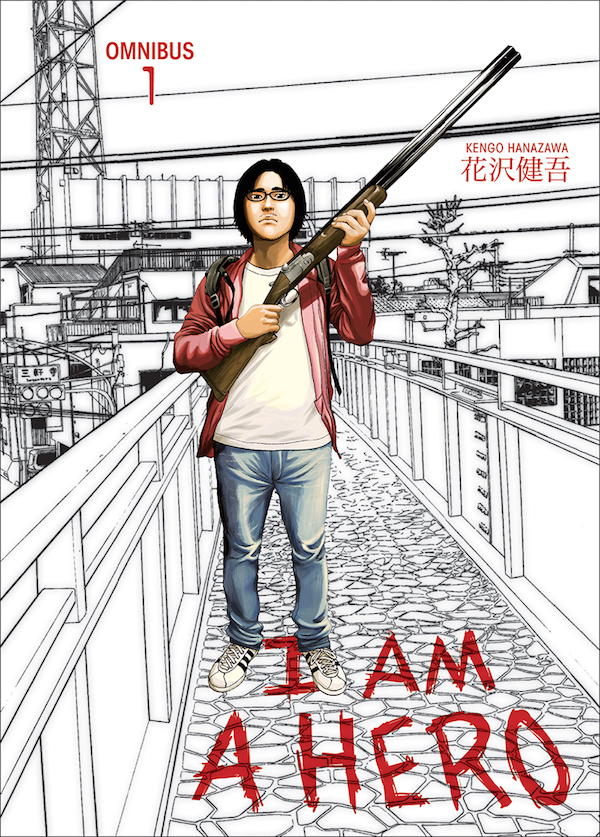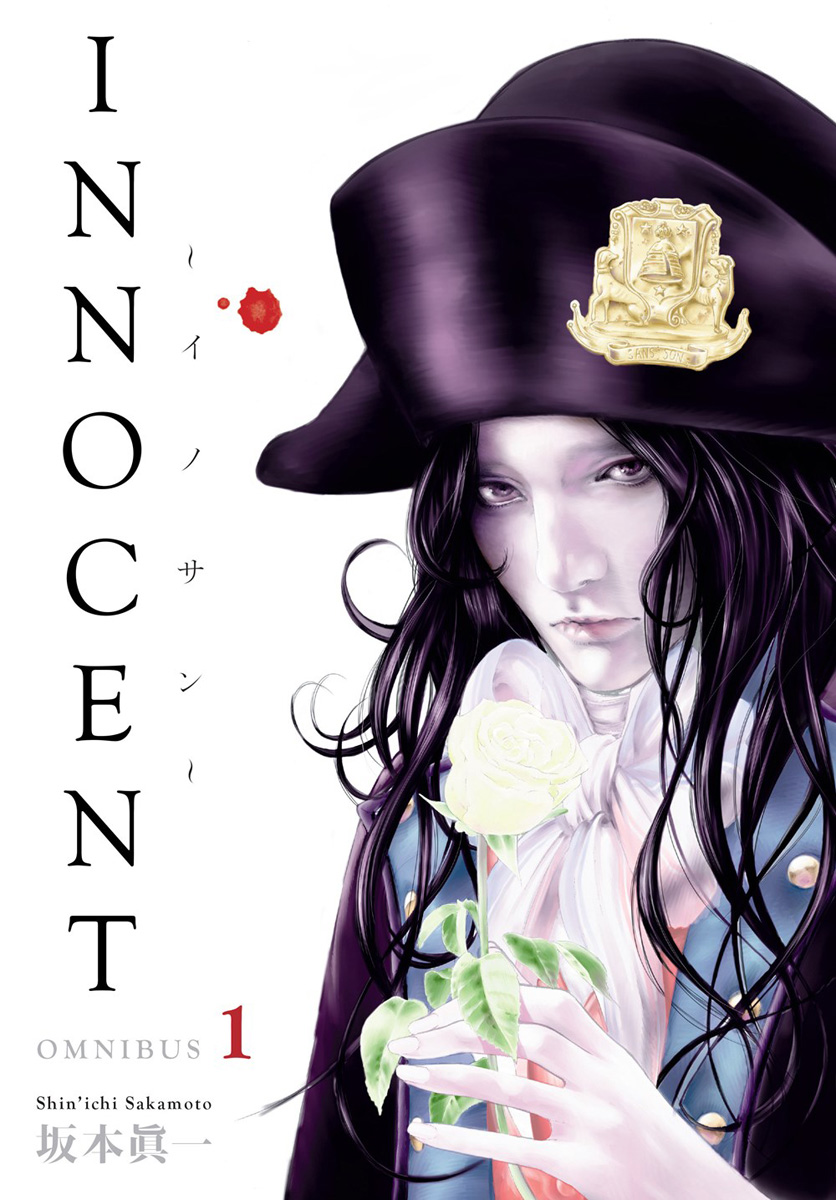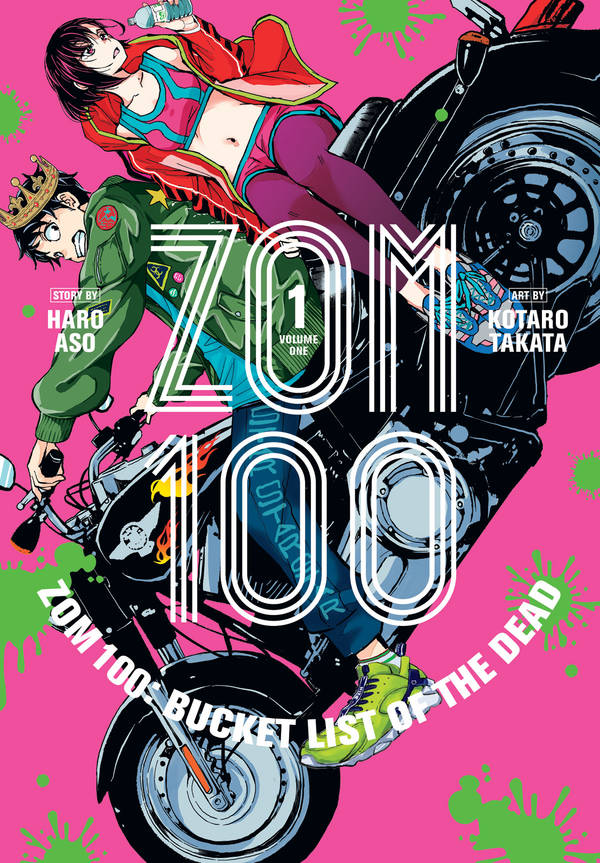At first glance, I Am a Hero looks like a Walking Dead clone, complete with gun-toting vigilantes and hungry zombie hordes. Peel back its gory surface, however, and it becomes clear that I Am a Hero is really a meditation on being trapped: by a dead-end job, by thwarted expectations, and by fears, real and imagined.
The “hero” of Kengo Hanazawa’s series is thirty-five-year old Hideo Suzuki. Though Hideo tasted success with the publication of his own manga, his triumph was short-lived: Uncut Penis was cancelled just two volumes into its run. He now toils as a mangaka’s assistant, working alongside other middle-aged artists whose professional disappointment has curdled into misogyny and grandiosity.
Compounding Hideo’s problems is his fragile mental state. He hallucinates, talks to himself, and barricades the door to his apartment against an unspecified threat, in thrall to the voices in his head. Despite his tenuous grasp on reality, Hideo is the only one of his co-workers who notices the small but telling signs that something is deeply amiss in Tokyo. Hideo soon realizes that his long-standing fears might actually be justified, and must decide whether to hunker down or flee the city.
Getting to Hideo’s do-or-die moment, however, may be a challenge for some readers. The first act of I Am a Hero is a tough slog: not only does it focus on a cluster of strenuously unpleasant characters, it documents their daily routines in painstaking detail. The tedium of these early chapters is occasionally punctuated by vivid, unexplained imagery that calls into question whether the zombies exist or are a figment of Hideo’s imagination. What the reader gradually realizes is that Hideo’s paranoia makes him alive to the possibility of catastrophe in a way that his bored, self-involved co-workers are not; they’re too mired in everyday concerns to notice the growing body count, a point underscored by the banality of their workplace conversations, and their shared belief that women are the real enemy.
When the zombie apocalypse is in full swing, Hanazawa delivers the gory goods: his zombies are suitably grotesque, retaining just enough of their original human form to make their condition both pitiable and disturbing. Hanazawa stages most of the action in tight spaces–an artist’s studio, a pedestrian footbridge, a hallway–giving the hand-to-hand combat the stomach-churning immediacy of a first-person shooter game. Only when Hanazawa cuts away to reveal a fire-ravaged, chaotic landscape do we fully appreciate the extent to which Tokyo has succumbed to the zombie plague.
It’s in these final moments of the book that Hideo glimpses an alternative to his miserable existence–the loneliness, anonymity, and failure that, in his words, have prevented him “from being the hero of my own life.” How he escapes these emotional traps–and those pesky zombies–remains to be seen, but it seems like a journey worth taking. Count me in for volume two.
A word to parents: I Am a Hero is less gory than either The Walking Dead or Fear the Walking Dead, but contains scenes of disturbing violence and frank sexual content. Dark Horse’s suggested age rating seems appropriate for this particular title.
BY KENGO HANAZAWA • PUBLISHED BY DARK HORSE • RATED 16+ FOR VIOLENCE, GORE, LANGUAGE AND PARTIAL NUDITY
* This review originally appeared at MangaBlog on June 4, 2016.



